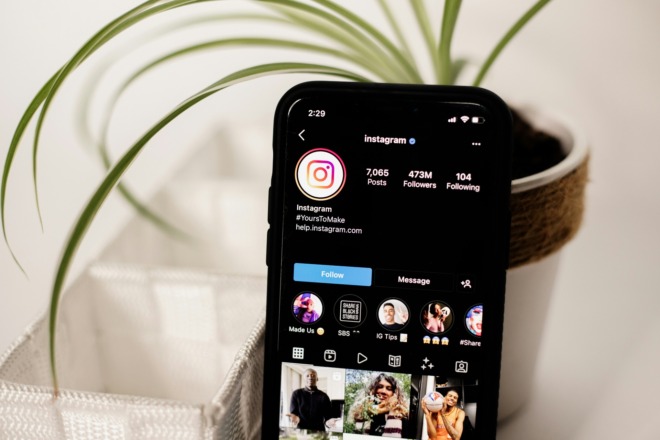You need all the help you can get when you’re a small business making your name on social media. It’s a good idea to get your own official hashtag. Here’s everything you need to know on how to trademark a hashtag.
Can You Trademark a Hashtag?
Yes, you can trademark hashtags if you meet the criteria the United States Patent and Trademark Office (USPTO) sets. Since they are just like any other standard symbol or term, you can apply to protect one for your business.
Since hashtags are popular — around 40% of Twitter posts contain one or more — it’s an excellent idea to use them. However, you need to make sure you can meet all the legal requirements before moving forward.
A business can only trademark hashtags if they’re “source-identifying,” meaning the tag must specifically connect to its goods or services. They must also be specific to the brand and distinguished from general words or phrases.
To put things into perspective, imagine a scenario where someone tries to trademark “#GoGreen” for their lawn care service. Since the phrase is unspecific and the public has been using it for years, the USPTO probably wouldn’t approve it.
Similarly, the trademark and patent office doesn’t allow people to trademark things the public creates, meaning you can’t secure a popular existing hashtag. For example, while many businesses attempted to register “#BlackLivesMatter” during the height of the social movement, the USPTO denied them since the public created it and used it first.
Avoid common phrases and words, such as “happy,” “party” or sayings from songs and movies. If you have a truly unique, short phrase and it’s associated with your business, you may be able to trademark it.
When Should You Trademark a Hashtag?
You should trademark hashtags if you want to represent a particular product, concept, or service online. The USPTO will only approve brand-specific requests. For example, applying for one is a good idea if it represents a product name, business, or ad campaign.
On the other hand, it’s better not to request a trademark if you only want to drive engagement, improve search engine optimization, or take traffic away from competitors. Although they all sound like great growth opportunities, the USPTO will recognize this as superficial and will deny your application.
If you want to drive traffic, just use hashtags like you normally would. After all, Instagram hashtags increase content visibility and engagement. You should still use them even without an accepted application because they unofficially attach themselves to your brand.
How to Trademark a Hashtag
Many small business owners feel overwhelmed by the legalese on the USPTO website. They hear other companies say they received repeated denials on their applications. Yet, hiring an attorney is expensive. Fortunately, these five simple steps will help you understand how to trademark a hashtag.
1. Check for Availability and Infringement
Make sure no one else has trademarked your hashtag before you do anything else. Otherwise, the USPTO will immediately reject your application. Since trademark requests and approvals are available to the public, you can find this information online.
Use the free Trademark Electronic Search System (TESS) via the USPTO. You’ll see what marks already have a copyright and which category they’re in. Doing a bit of research will also save a lot of time, effort and money.
You may even gain some insight into how other brands use hashtags for their purposes. You can seek out what you know are competitor hashtags and compare to their online advertising. While you want something unique to represent your brand, you can learn a lot by studying your nearest competitors.
It’s also essential to ensure no similar-sounding hashtag exist because they could increase the chances of application denial. For example, if someone already has “#BestFitClothing,” then the USPTO would likely reject “#BestFittingClothing” since it’s nearly the same. A thesaurus might help you come up with something unique that people will associate with your brand instead of another. A distinctive phrase will make you stand out and could give you direction as you move through marketing campaigns.
You’ll have to pay a submission fee through a credit card, an existing USPTO account, or an electronic fund payment. Make sure you have everything ready before you begin to keep things flowing smoothly.
You can register a trademark with your state, especially if your business is a local service not likely to gain national traction. However, filing for a federal trademark runs several hundred dollars plus additional fees for things such as requesting an extension of time, filing late or separately filing paperwork to show use.
If the USPTO denies your application, you may have to start again or even enlist the help of an attorney. Costs add up, so gather what you need to have the best chance of success on your first attempt.
2. Create a USPTO Account
You can only apply for a trademark electronically, so you have to create an account to proceed. Use the trademark electronic application system (TEAS) on the USPTO website. You can either have an attorney — licensed in the U.S. or Canada — or present yourself as unrepresented to complete the identification verification process.
The process is complex but many small business owners navigate it successfully by taking the steps in order and proceeding slowly. Stop and research anything you don’t fully understand. You could also fill out the paperwork and have an attorney look over it for potential problem areas without paying them to file. Use your lawyer as a consultant, since most charge by the hour.
The USPTO requires your social security number, a valid form of government-issued photo identification, and a selfie to finish the “ID.me” checklist during TEAS account creation. You must also allow credit profile information access — note that it will not affect your credit score.
Although the USPTO technically offers a paper verification alternative, it’s not ideal since you have to apply electronically. The entire process will go much faster if you submit everything online instead of using physical documents.
3. Fill Out the Application
Figuring out how to trademark a hashtag gets complex at this stage since there are many different forms. Since a hashtag is a word or phrase made up of text, you will apply to register a standard character instead of a drawing. Then, you must complete the Trademark ID Manual to categorize your business. The USPTO can decide if the application is relevant.
When you choose your filing basis, you have to specify for “use in commerce” or “intent to use.” The first option means you plan to offer goods and services across state lines, while the latter is if you want to state your official intention to trademark and use the hashtag.
For small businesses just starting out, the “intent to use” option is great. It gives them up to four years to get situated and build their resources — the USPTO will only grant a hashtag trademark if the business has been using it. When you’re ready, you fill out a Statement of Use document to register it.
Remember, you will have to show use at the end of the time and you’ll need to be utilizing it for more than social media. Make sure you include your hashtag on local event posters, flyers and mailed items to solidify the need to use it to identify your brand.
While this approach doesn’t guarantee you will get your trademark over someone else, it helps you legally since it acts as your first official “use” of it. Effectively, it gives you an advantage if someone else tries to claim it. It takes more time and can cost more, but it’s a good idea if you aren’t ready to sell products or services with the hashtag yet. Don’t delay in starting to use the hashtag, though. Someone else could swoop in and claim it, even if you’ve filed paperwork.
4. Submit Your Information
Understand some of the personal details you give the USPTO will become public as soon as you apply. You must submit things like your address, email and name. However, there is some wiggle room if you work from home or don’t have business contact information set up yet.
The submission of personal information is required by law. Still, you can keep some things to yourself for privacy or protection reasons. For instance, you don’t need to include your phone number. Also, you can use a separate mailing address — like a PO box — instead of your home address.
If you want to remove your details after they’re public, you can email the USPTO or petition the office’s director. Even though there’s no guarantee they will comply, they might if your citation is exceptional or you uploaded optional information.
Whether you choose to remove details could come down to whether you’re sharing a business address or personal details. Solopreneurs may run their companies out of a home office and want a buffer between the public and personal information.
Will Your Trademark Application Get Approved?
Although there’s no guarantee the USPTO will approve your trademark application, you can increase your chances of success if you fill out the correct forms and do your research. Once you know the basics of how to trademark a hashtag, the rest of the process becomes much more manageable.
Remember, even though people use hashtags almost purely on social platforms, the USPTO won’t approve a hashtag if they think you only use it for SEO purposes. It boils down to the fact that you can’t use it to attract consumers — it must identify your brand.
For example, they would likely deny a vintage clothing company’s application for “#ChicAntiqueClothing” if they only used it when telling customers to post about them. Even if they have the hashtag on every product, referencing social media isn’t ideal. It makes it seem less like an attempt at brand protection and more like a way to increase online traffic.
To ensure success, don’t infringe on others, prove the hashtag connects to your brand, and fill out the right paperwork. If you do everything correctly, you have a good chance of securing your trademark.
Do You Truly Want to Trademark Your Hashtag?
The idea of protecting your business name or phrasing that identifies you sounds good on the surface, but why wouldn’t you want others to mention you on social media, tag you and use your hashtag?
When it comes to marketing, word-of-mouth can be one of the most powerful forms. The USPTO requires you to protect your trademark and show efforts to take down other people using it to maintain your registration.
Do you plan to go after each person using your brand name as a hashtag? Will you send them a cease and desist letter and insist they remove any posts with the tag?
With social media, there are still a lot of gray areas when it comes to fair use and how others can mention your name. Consider what is to your best advantage and if the effort and cost is worth your time.
Will a Hashtag Trademark Protect Your Business?
Trademarking something usually protects your business, but there are some exceptions. There are multiple instances where consumers or competing businesses using your trademarked hashtag fall under fair use.
People often use hashtags to describe things on social media, so there may be some overlap between your trademark and unintentional infringement. However, you should know descriptive hashtags that aren’t source-identifiers don’t count as infringement.
While a business can take people to court if they attach its trademark to their company or use it to sell goods or services, the USPTO protects them when they use it to drive traffic or describe their social media posts. Since you can’t trademark hashtags as social tools, their use in that aspect doesn’t typically count as infringement.
Additionally, there’s a chance other businesses will use hashtags like yours. While they likely won’t get them trademarked, there’s not much legal power you have over similar-sounding phrases. Say your competitor uses “#CoolShirtz” when you have “#CoolShirts” registered — while a court could technically rule in your favor, it usually counts as fair use.
Get Started With Your Application
You’ll have a much higher chance of success after learning the ins and outs of how to trademark a hashtag. The process can get somewhat complex at times, but most small business owners should handle it well.
About The Author
Cooper Adwin is the Assistant Editor of Designerly Magazine. With several years of experience as a social media manager for a design company, Cooper particularly enjoys focusing on social and design news and topics that help brands create a seamless social media presence. Outside of Designerly, you can find Cooper playing D&D with friends or curled up with his cat and a good book.


